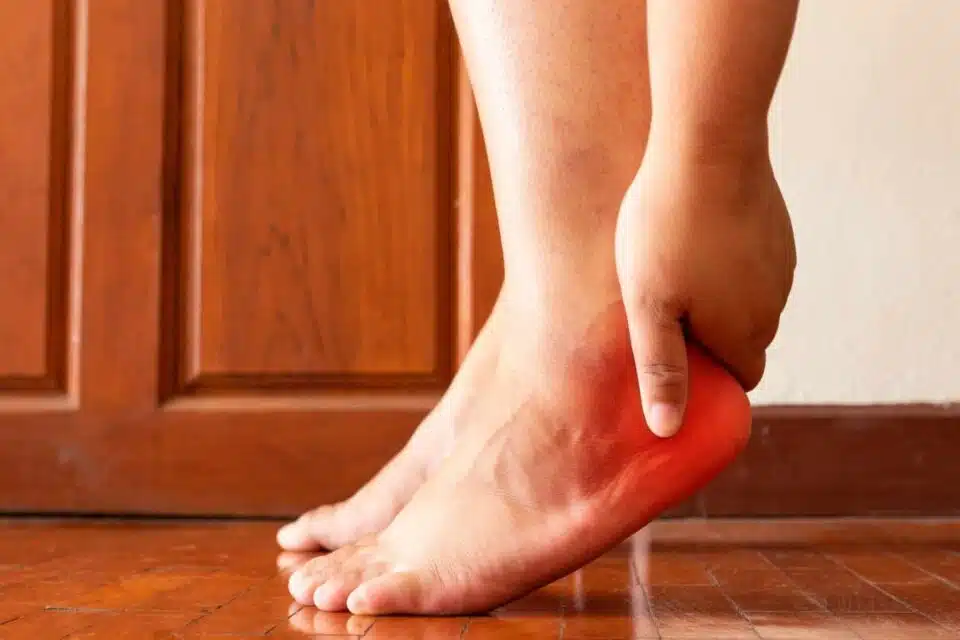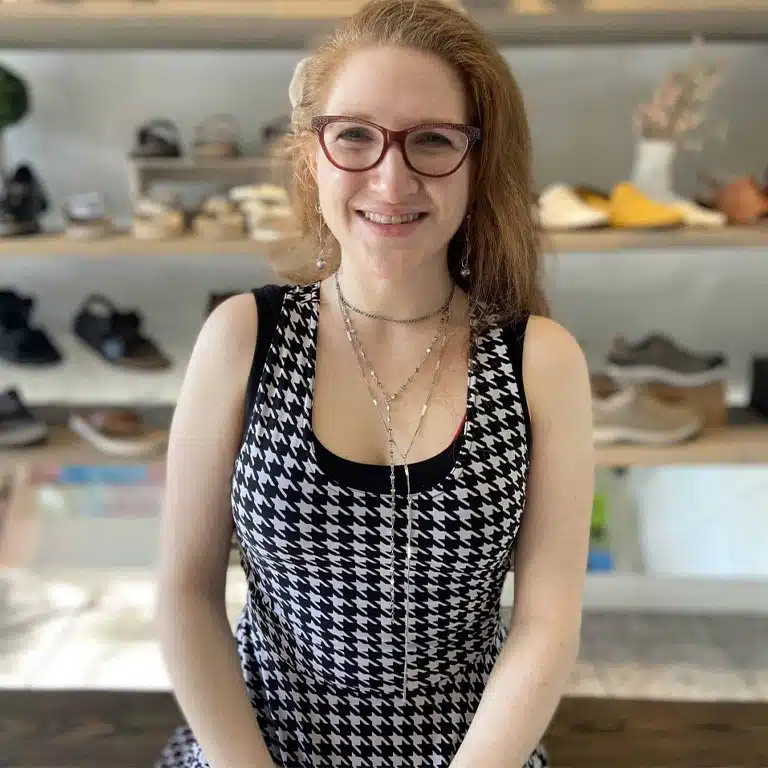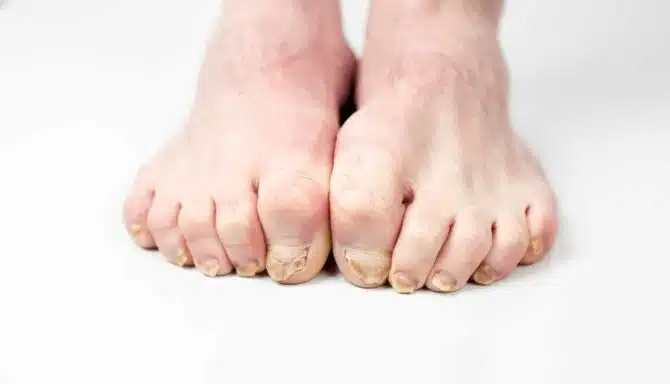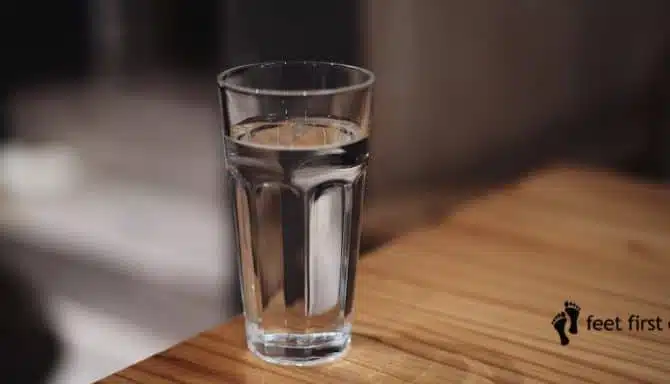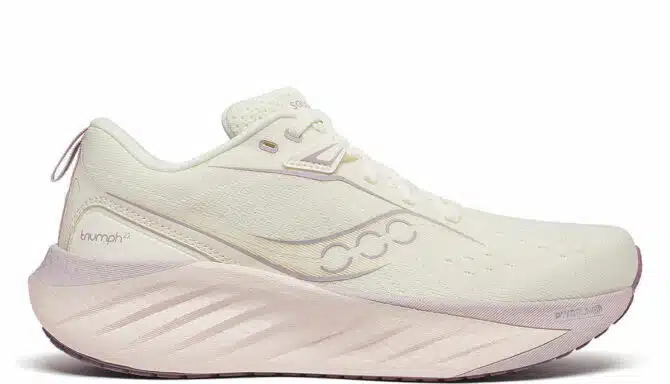Everybody has foot pain from time to time, right? Surely it must be normal to experience foot pain that comes and goes? Especially at the end of a long day or whilst walking?
Actually no. The main causes of foot pain that comes and goes has to do with inflammation and ultimately: Your body is trying to tell you that there is something wrong.
Here’s some of the facts and fiction that you might have heard about foot pain that comes and goes:
- Walking through pain does not make things better or “loosen up” the area
- Foot pain that comes and goes is called acute pain. It is not with you all the time. Sometimes it can be at the start or end of the day. Sometimes it can be with certain exercises or work environments.
- Because the pain disappears most people will carry on doing the same activity. Then all of a sudden that pain quickly comes back, maybe a little worse. Then it subsides again…but it then comes back.
- Foot pain, therefore, is not normal. If you were free from foot conditions, you wouldn’t be experiencing nagging pain that subsides only to flare up later.
Whether it’s a pain in the top of the foot, heel pain, or ball of the foot pain, some common sites of foot pain can interrupt your day by reappearing when you thought you were feeling better. And even though they may not be as severe as conditions that cause constant discomfort and foot pain, you’ll be glad you sought treatment in the long run.
Furthermore, many foot issues get worse if you choose to ignore them. So pain that comes and goes now may stick around all day long in the future.
Let’s look at the common causes of foot pain to fade and return.

The 5 Common Causes Of Foot Pain That Comes and Goes
- Plantar Fasciitis
- Metatarsalgia
- Morton’s Neuroma
- Injuries
- Tendonitis
Plantar Fasciitis
Plantar fasciitis is somewhat notorious among foot conditions. It ranks as one of the top causes of heel and arch pain and targets people with varying lifestyles. It is also one of the prime suspects for causes of foot pain that comes and goes. You can read more about it here. It is a very common condition and when caught early it can be calmed down quickly. Some of the main causes are:
- Foot shape
- Floor materials
- Tight muscles
- Excessive weight
- Inappropriate footwear
- Overuse
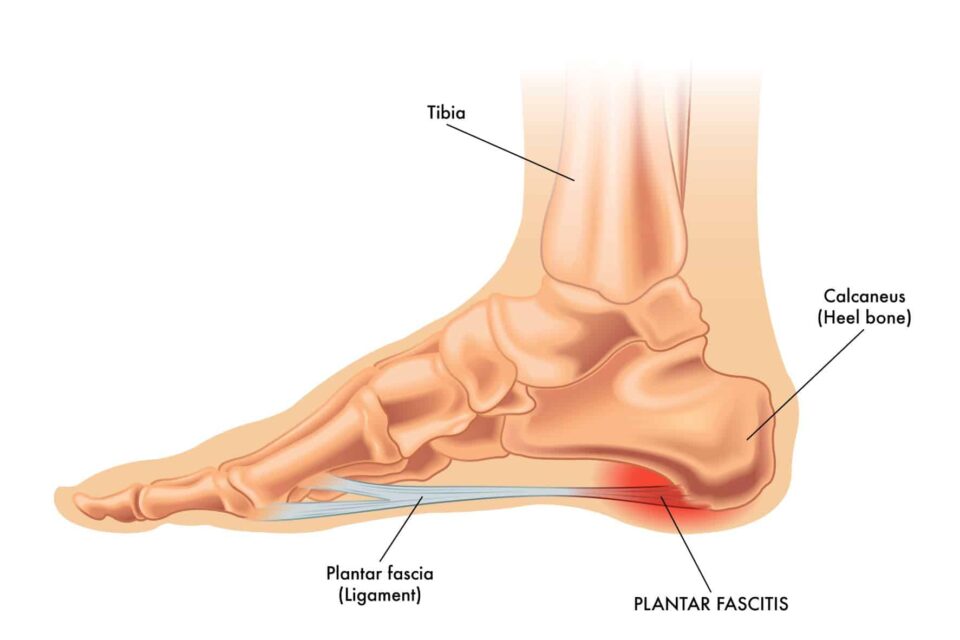
The heel pain stems from the inflammation of the plantar fascia, which is a band of tissue that runs along the arch and connects the heel bone to the toes. Constant pulling (of the fascia on its insertion point at the heel bone or toes) and contact trauma (when your heel comes into contact with the floor) cause inflammation and pain.
Why does the pain come and go?
Inflammation chemicals are created when the fascia is under strain or is being traumatized. This why it becomes sore. When you are at rest you obviously don’t get the pain. But, those inflammation chemicals are still being generated and they build up. When you put your foot down to start to walk again (like those first few steps of the day) the foot can be quite painful. It is only when you then walk some more that those chemicals start to dissipate.
Of course, it’s important to seek treatment even if the pain fades for several intervals during the day; if you don’t, it can get much worse and become chronic.
Metatarsalgia
Do you have pain in the ball of the foot that comes and goes? Metatarsalgia may be the culprit.
Like plantar fasciitis, inflammation of the metatarsal area (the area between the toes and arch) causes metatarsalgia. Not only is this condition difficult to pronounce, but it can make walking downright unbearable. The same risk factors of plantar fasciitis apply, in addition to wearing ill-fitting footwear and performing physical activity that involves running and jumping.
Why does the pain come and go?
Metatarsalgia feels worse when you flex your foot, walk, run or simply stand (especially barefoot). The foot pain will then fade during rest periods.
Again, when inflammation is the reason behind intermittent pain, it will not bother you 24/7. Metatarsalgia is no different, but if you ignore it, the condition may worsen, causing radiating pain to other parts of the foot, the hips and the lower back. This is caused by your body attempting to accommodate the pain by walking differently, which then strains other body parts.
Morton’s Neuroma
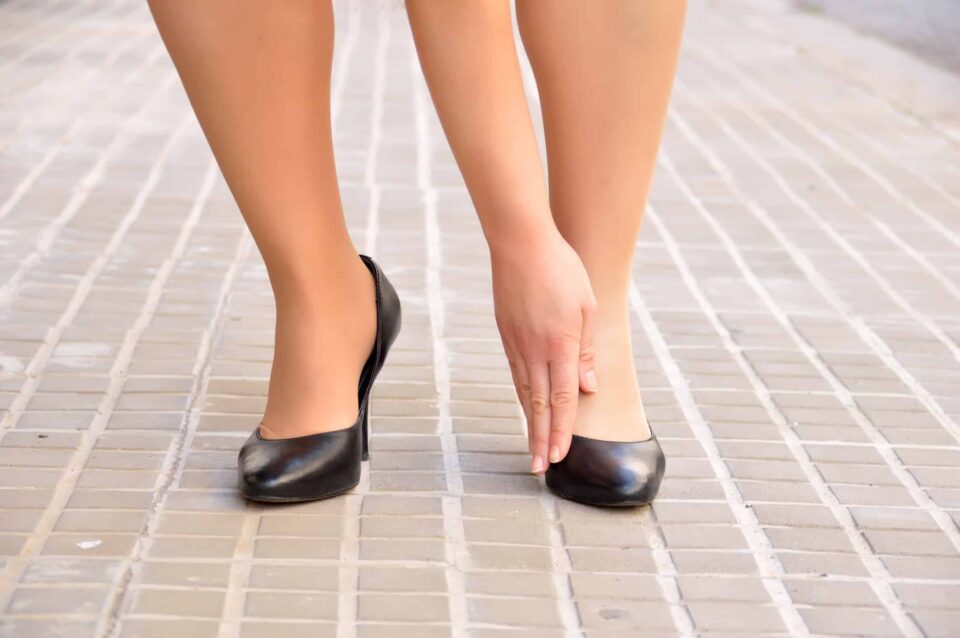
Sometimes nerve problems are a main cause of foot pain. Your feet are full of these tiny yet very important structures.
Morton’s Neuroma affects the ball of the foot, specifically the area between the 3rd and 4th toes. The pain is accompanied by a burning sensation and a nagging pressure, and it can feel like you have an invisible pebble in your shoe. But it’s also known to radiate to the top of the foot, causing intermittent stabbing pain.
Your toe nerves run between the balls of your feet. If the foot becomes compressed, those bones press upon the nerves even more. As the nerves becomes irritated and traumatized they give off pain signals. The most common reasons for nerve irritations are:
- High heels
- Narrow footwear
- Foot deformities like hammertoes and bunions.
Why does the pain come and go?
Morton’s Neuroma pain is generally intermittent, but when you irritate the nerves, you’ll notice the pain is back in full force.
The symptoms will flare up if you continue to walk in the same tight shoes that triggered the problem in the first place. Likewise, if you spend a long day on your feet, the pain will be much more challenging than on a day of lounging and relaxation. Over time, the nerves start to thicken and then the pain can be quite bad. With Morton’s (or any nerve compression) it is wise to seek treatment early to reduce the risk of nerve trauma.
Injuries
A foot injury is a broad term for many scenarios, from dropping a heavy object on the top of the foot to a full-blown ankle sprain or stress fracture. Technically, many foot conditions can be considered injuries – even plantar fasciitis. But for simplicity, let’s discuss more sudden traumatic injuries instead of those that cause inflammation or degradation over time.
Why does the pain come and go?
When you first suffer from an injury, the pain will likely be acute and bother you consistently, even while resting. You might see the area become bruised and swollen
But foot pain from an injury can transform into a pain that comes and goes when you start to heal. Even though most moderate injuries heal within a month, light activity will trigger pain as you slowly get back to normal. Generally, you must stop any activity if you experience sudden, sharp pain while healing from an injury.
There are many different foot injuries that can cause foot pain that comes and goes:
- Some of these traumas can be fractures
- Some can be cuts to the skin after it has been traumatized that you might not be able to feel
- Infection signs can also come and go and not be constant
It is therefore important to speak with a foot specialist and your family doctor first about managing intermittent pain after an injury.
Tendonitis
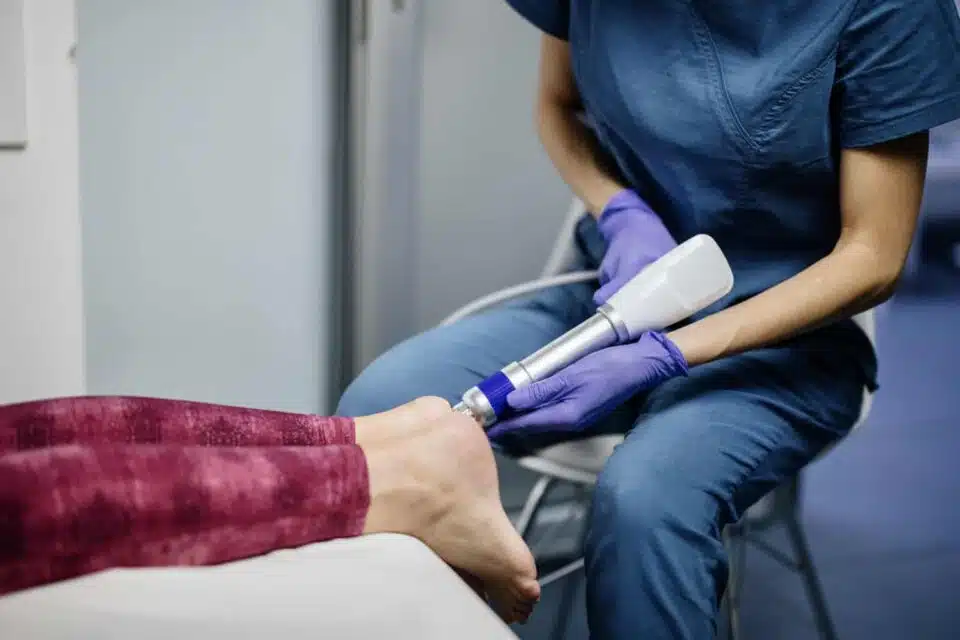
Achilles tendonitis causes a dull ache directly above the heel or on the back of the leg, and extensor tendonitis causes the same feeling on the top of the foot. They both result from inflammation and overuse of their respective tendons: the Achilles tendon (the tendon that connects the back of the calf to the heel bone) and the extensor tendons (the tendons that run along the top of the foot).
Athletes are the most vulnerable, as these are repetitive strain injuries that arise after vigorous physical activity. When you bear weight on your toes and feet, you’re putting these tendons to work, making them more susceptible to strain.
It is also wise to check with your Doctor or foot specialist to assess whether tendonitis is causing your foot pain before you start any treatment. Why? Some conditions can look like a tendon issue but they are not. Pain on the back of the leg can be serious. And as we said before, fractures can also be a strong cause of foot pain. This is especially so in high trauma and repetitive trauma jobs and sporting activities. In some sports, tearing and even splitting of the Achilles is not that uncommon.
Why does the pain come and go?
Naturally, the pain will be worse when you use these tendons in any capacity or when you first start to move during the day. But tendonitis can also cause stiffness at the end of the night or first thing in the morning without movement.
Fun fact: the Achilles tendon is not only crucial for performance enhancement, but it’s also the biggest and strongest tendon in the human body! So be sure to protect it from additional harm by seeking treatment.
What Can I do About The Causes Of Foot Pain That Comes and Goes?
First, don’t let rest periods trick you into thinking your foot pain is gone. Whether it’s inflammation, a pinched nerve or any other trigger for the pain, seeking treatment at the start is always the best option. As we have seen, assessing and treating foot pain early is essential to reduce the risk of that pain becoming chronic or creating further foot pain.
Furthermore, a common mistake is assuming that chiropodists are only for severe cases. But several services from a foot clinic are medically proven to provide foot pain relief for those with intermittent discomfort.
Some of the most effective treatment options include:
- Custom orthotics
- Footwear recommendations and fittings
- Superfeet insoles
- Shockwave therapy
- Exercises and stretching routines
- Therapeutic taping
- Splints and boot casts
Apart from treating your foot pain, Chiropodists can also show you how to prevent and manage your foot pain so that you can enjoy the activities that you love. And if you have chronic foot pain, the Chiropodist can help:
